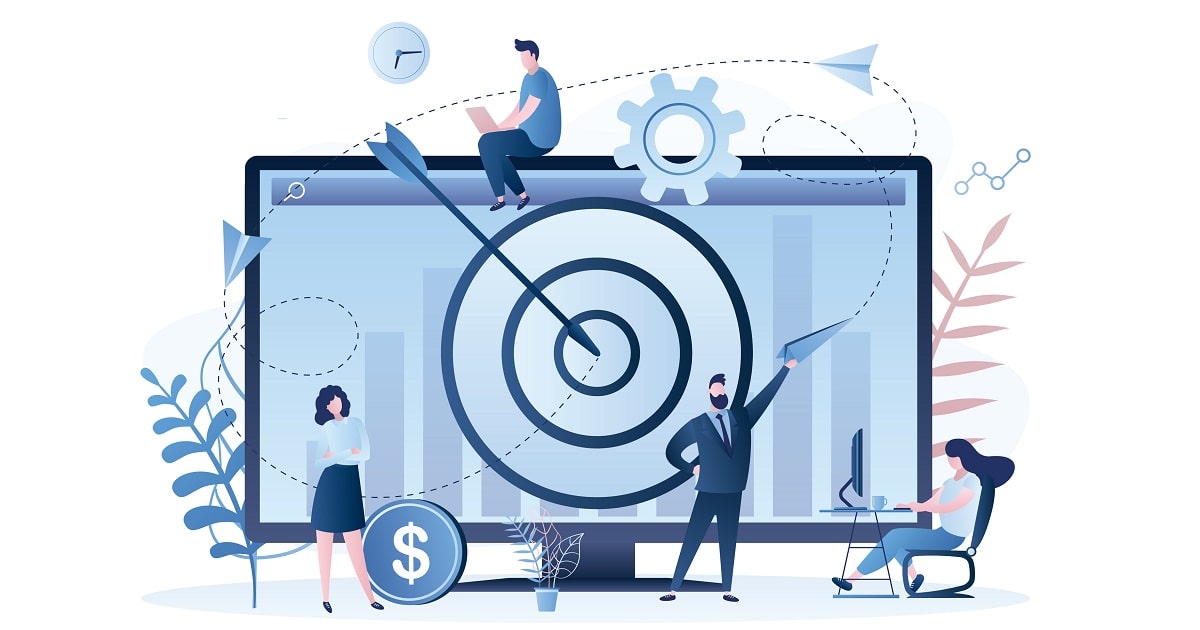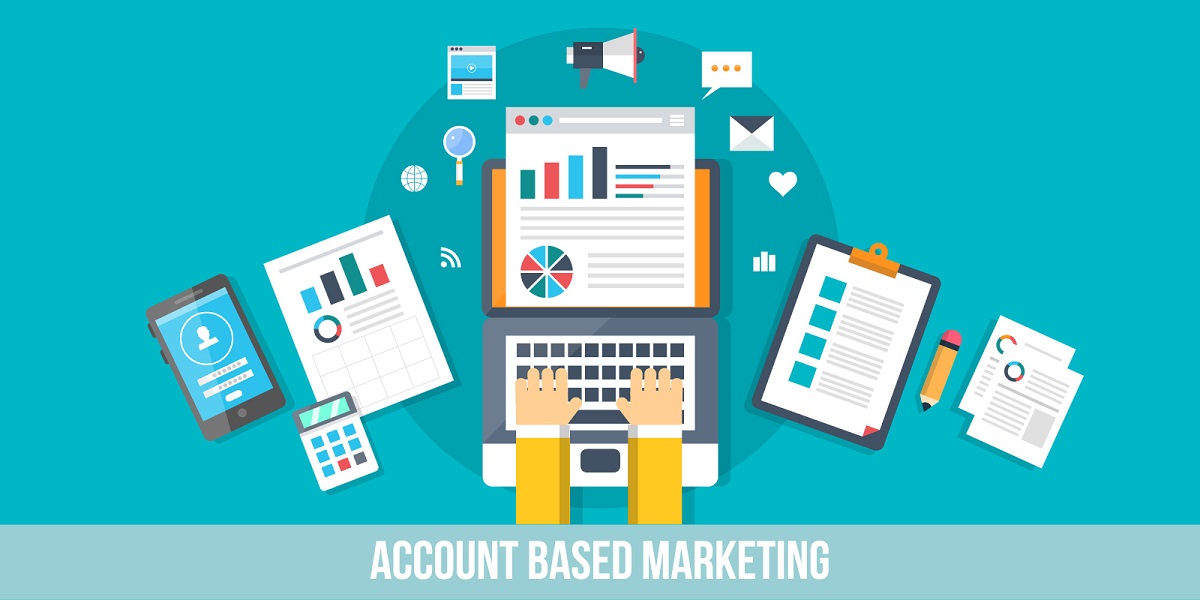
Buyer Intent Data
Article | August 8, 2021
Targeted advertising has become the norm on popular ABM platforms. As a result, many marketers have forgotten ABM's principles. Leadership, marketing, revenue, sales enablement, customer success, and product teams should work together to hit ABM numbers instead of completely relying on platforms and demand generation strategies.
Here are three reasons why ABM platforms and demand generation campaigns shouldn’t drive your ABM strategy:
GTM Teams Cannot Advance
Companies focusing on targeted demand gen through technology make their ABM strategy campaign-based instead of focusing on the interactions the sales and marketing teams need to have with target accounts to deliver revenue growth. They struggle with winning multi-year contracts.
Ideally, the teams should focus on filling the gaps left by competitors with different content and messaging in order to turn accounts into sales.
Buying Journey Support is Limited
ABM is about getting key accounts to generate revenue. When teams rely on technology to put out content and messaging for target accounts but don’t change their sales motions, processes, and conversations, their win rates drop. They should change their prospects’ experiences at every stage of the buying journey to deliver an optimal customer experience.
Sales Cycles Continue to be Lengthy
An ABM strategy should be used to influence both selling conversations and internal conversations that the sales teams are not privy to. Creating demand and building a pipeline through ABM platforms won’t bring revenue growth if there is no follow-through to convert accounts. Teams should engage in account-based enablement and come up with a plan to engage accounts that go dark or get stuck in the buyer journey.
Use Technology and Demand Generation in Moderation
Remember that ABM platforms and demand gen strategies can enhance your ABM efforts, but they shouldn’t be the driving force behind your ABM strategy. Marketers need to start using ABM to fix the revenue issues in their organizations instead of treating it like a targeted demand-generation function.
Read More

Buyer Intent Data
Article | March 6, 2023
Gain insights into 2023 buyer intent data trends. Explore key marketing technologies and strategies essential for businesses to enhance their ability to engage potential customers effectively.
Buyer intent data is indispensable for businesses in an increasingly fast-paced and data-centric account-based marketing (ABM) space. It serves as a compass guiding marketing and sales efforts by providing profound insights into consumer behavior and purchase intent. With this information, businesses can precisely target their targeted audiences, personalize their messages, and optimize their resource allocation, all of which result in higher conversion rates and a greater return on investment.
With rapidly changing customer behavior and evolving marketing space, buyer intent data has become the cornerstone of contemporary marketing and sales strategies. In 2023, it is set to reach new milestones, fueled by growing technological advancements and a deeper understanding of consumer behavior.
As a result, it is essential for B2B businesses and marketing teams to be aware of the emerging buyer intent data trends to adopt cutting-edge technologies and strategies that enhance their ability to understand and engage potential customers effectively.
Futuristic Buyer Intent Data Trends for 2023 and Beyond
In an era where competition is fierce and customer expectations are continually growing, harnessing the power of buyer intent data is not just advantageous; it's fundamental for achieving sustainable growth and increasing market share in the space. Furthermore, it bolsters customer engagement and loyalty by demonstrating a commitment to understanding and meeting their needs.
Businesses that embrace B2B buyer intent data gain a decisive advantage, positioning themselves as agile and customer-focused enterprises ready to thrive in the marketing domain. Consequently, staying informed about buyer intent data trends is not only a strategic advantage, it's a necessity for sustained growth and relevance.
Here are some of the latest buyer intent data trends that businesses must be aware of in 2023
AI-Powered Predictive Analytics
One of the most exciting trends in buyer intent data is the increasing role of artificial intelligence (AI) and predictive analytics. AI-powered buyer intent data tools analyze vast amounts of data to identify patterns and trends that might not be apparent to human analysts. This, coupled with predictive analysis, enables businesses to predict buyer intent more accurately.
With advanced AI algorithms, businesses are able to sift through vast datasets, recognize intricate patterns, and predict buying intent with unprecedented precision. This technological advancement enables companies to not only identify prospective customers but also create customized marketing strategies and engage them at the precise moment when they are most likely to make a purchase. In essence, AI-powered predictive analytics is elevating buyer intent data to an entirely new level, making it an invaluable asset for any forward-thinking business striving for marketing and sales excellence.
Integration of Multiple Data Sources
Buyer intent data relied on a single source of information, such as website analytics or email engagement metrics in the past. However, with increasing emphasis on understanding customer behavior, there's a growing recognition of a holistic view of buyer intent. This, in turn, is increasingly creating a need to integrate multiple data sources.
The trend of integrating multiple data sources provides a more detailed and deeper understanding of consumer behavior, thereby significantly enhancing the value of buyer intent data. Businesses can construct an extensive mosaic of each lead's digital journey by combining data from various touchpoints and channels, such as website interactions, social media engagement, email responses, and chat interactions. This multidimensional perspective provides more in-depth and accurate insights into buyer intent, allowing companies to tailor their marketing and sales strategies with unmatched precision.
Real-time Intent Monitoring
As businesses and marketers increasingly adopt advanced technologies, the days of post-event analysis are rapidly diminishing. Now, real-time monitoring of intent has become the primary focus. The strategy involves the use of innovative tracking technologies to detect and respond to buyer signals in real-time. The trend is increasingly gaining prominence as it allows businesses to respond to buyer signals as they happen.
When a potential customer exhibits strong purchasing signals, such as extended engagement with pricing pages, repeated product demo views, or initiating a live chat, real-time alerts trigger immediate action. This instantaneous response capability enables marketing and sales teams to provide highly relevant information and immediately deploy targeted messaging or offers, significantly increasing the chances of conversion.
Cross-channel Engagement
As businesses recognize the significance of engaging with leads and consumers across multiple channels, the need for innovative strategies, such as cross-channel engagement, is rapidly growing to ensure that businesses are present where their audience is, be it via email, social media, website interactions, or even chatbots.
In an era where consumers frequently switch between channels during the purchasing journey, cross-channel engagement ensures that businesses are consistently present and responsive. It improves the customer journey, enables complete data capture and analysis, and contributes to a more in-depth and accurate understanding of buyer intent. Cross-channel engagement enriches buyer intent data by providing businesses with a more detailed and real-time view of their audience's behavior and preferences, ultimately resulting in more effective marketing and sales strategies and stronger customer relationships.
Hyper-personalization
The hyper-personalization trend is ushering in a new era of consumer intent data utilization by bringing personalization to new heights. The approach utilizes the abundance of available consumer intent data and AI-driven content recommendation engines to deliver personalized experiences to individual leads and customers.
By analyzing a prospect's past actions, preferences, and interactions, businesses can create hyper-personalized content and offers that precisely align with their interests. It also optimizes time, ensuring that engagements occur exactly when a prospect has the highest possibility of converting. This level of personalization increases the chances of conversion as well as fosters a deeper connection between brands and their target audience. Hyper-personalization is not merely favoring consumer intent data; it is elevating it, enabling businesses to deliver exceptional, one-to-one experiences that boost engagement, trust, and brand loyalty.
The Bottom Line
Buyer intent data is the lifeblood of modern businesses, providing vital insights into consumer preferences and behavior. It enables companies to determine when potential consumers are prepared to buy, allowing timely and targeted marketing and sales efforts.
Staying informed about the latest buyer intent data trends enables businesses to employ cutting-edge technologies and strategies that improve their capacity to comprehend and engage potential customers. Companies can improve their techniques, enhance customer targeting, and optimize resource allocation by foreseeing and adapting to these trends. Furthermore, being aware of these trends is crucial for maintaining customer trust and compliance with evolving data privacy regulations, thereby ensuring the ethical and responsible use of data.
Read More

Buyer Intent Data
Article | September 11, 2023
Sales and marketing have transformed. Marketers have had to adapt, modify their activities and lean into more collaborative interactions with sales teams in a way they haven’t done before. As events and direct channels are on the minor list of concerns, sales teams have become a principal marketing channel to reach accounts.
A quick look at Google trends shows you how Account-Based Marketing (ABM) has revolutionized the world of B2B marketing. It happened by going from non-existent to extremely popular in the last several years and hiked during the pandemic. With today’s buyer journey becoming progressively digital, B2B organizations are interested in ABM to deliver exceedingly personalized and focussed marketing campaigns.
The secret behind the burgeoning popularity of Account-Based Marketing (ABM) is how confident and versed marketers feel now while using it. While ABM persists as the hot MarTech topic since 2019, its influence grew during the pandemic. While it may seem all geek to new users, ABM offers rewarding opportunities for marketers.
As per the ABM evangelist, Sangram Vajre of Terminus, “If marketers embrace ABM methods, they will earn desired revenue in their businesses. I want to do everything I can to help make marketers heroes.”
As per The B2B Lead, ABM directly inscribed sales and marketing alignment and challenges 50% of the time when sales wasted time against unproductive targeting.
ABM Drives Revenue, and Here’s the Proof:
If you are putting together an ABM strategy, such numbers would be handy. This blog gathers ten powerful Account-based Marketing stats that every marketer (you) should know as we land in 2021 (the post-pandemic era). So, to show you how beneficial account-based marketing can be, here you go.
10 Account-based Marketing Stats
92% of Marketing Leaders are More Focused at New Selling Process
Marketing leaders are now selling with vision to the executive level than what they did some years ago. As per a recent ITSMA report titled, “Engaging the C-Suite: 2019 Sales and Executive Engagement Survey Report”, 92% of marketing leaders mentioned that selling at the executive level is more critical to their sales strategy.
In today’s time, marketers are relying on ABM capabilities to capitalize on new market prospects. In addition, B2B businesses are designing and deepening their relationships around ABM to engage C-level executives more effectively.
90% Role of Marketers in ABM Today is Strategic
The role of marketers doing ABM is more strategic on particular programs. As per Alterra Group’s report, marketers need to demonstrate deep account and industry-specific expertise to create seamless ABM campaigns. To create account-relevant marketing messages, companies are bestowing more resources and snowballing the expenditure on ABM. Such expenditure is predicted to exceed that on other marketing technologies rapidly.
A Sturdy ICP has a 68% Higher Account...
Organizations with a strong ICP have 68% higher account marketing win rates. Modern marketing teams are now being measured on pipeline and revenue, not leads. This way, they are staying more focused on productive revenue growth at every stage of the funnel.
A Total Economic Impact report by Forrester found that prospects see an average 313% ROI by bringing go-to-market teams practicing account-based marketing tactics together to make marketing efforts efficacious.
69% of Top-Performing Account-Based Organizations have Dedicated Leaders
69% of top-performing account-based organizations now have a dedicated account-based leader. The Account-based marketing stats reflect that 70% of marketers who started their account-based initiatives in the past six months have dedicated leaders who are entirely dedicated to the market, having particular and focused accounts instead of a sea of buyers.
60% of Users Reported an Increase in Revenue
When ABM picked its pace in at least a year, 60% of its users reported a revenue surge of at least 10% & 19%, termed an impact of 30% or greater. In companies with a stout ROI from ABM, 75% measure pipeline generated and revenue, 67.5% measure meetings and target account pipeline are set, and 63% measure marketing qualified leads are gained.
As a result of this, approximately 70% of B2B marketers will pilot or launch full-sized account-based software and programs to target and engross groups of buyers in selected accounts.
62% of Marketers are Being Optimistic
They can easily measure the positive impact of account-based marketing tactics since adopting ABM. This has been the most efficient benefit of ABM observed up until now.
Forrester envisages that by 2025, the term "ABM" will evaporate as account-centric becomes the distinct way for B2B organizations to identify, plan, manage, and measure buying and post-sale motions for prospects.
80% ABM Budgets are Intensifying
After B2B companies saw the success of early programs, budgets devoted to ABM amplified by 40% year over year, from 20% in 2019 to 28% in 2020. This surge in investment reflects a confident attitude in return on ABM initiatives.
42% B2B Companies Favor Keeping Accounts in ABM Strategy between 50 and 500
As per the Demand Gen Report, 18% of B2B companies try to keep their accounts list under 50, 19% target a broad set of accounts, ranging between 1,000 and 5,000.
For a focused ABM approach, the report found that 42% of B2B companies try to keep their account list between 101 to 500. However, as this quantity varies depending on the size and scope of individual company deal sizes, these results will vary based on industry and product.
Companies Executing ABM Amplified ACV by 171%
B2B companies that have implemented ABM perceived a 171% rise in their Annual Contract Value (ACV) more significant than the pre-ABM ACV. In addition, ABM offers a boost to the pipeline rate, thus, enabling marketers to target prospects belonging to new revenue goals.
75% of B2B Buyers and 84% of C-level Executives Use Social Media
B2B buyers and C-level executives progressively rely on social media to harvest more information about products and services before making purchase-based decisions. 80% of buyers who had not yet used social media to research purchases are willing to use the right platforms.
As online mediums have become a progressive information preference of buyers, companies create profitable account-based campaigns to ignite the initiative.
A recent Social Buying Study from International Data Corporation (IDC) concludes that B2B buyers are the most active in using social media to support the buying process by having 84% superior budgets that made 61% more purchase decisions. This significantly influenced a greater span of purchase decisions than those buyers who did not use social media for their purchase process.
A Note About the Account-based Marketing Stats and COVID-19
April 2020, was just when all businesses were beginning to feel the effects of the pandemic. As a result, the COVID-19 impact has altered several perspectives, including budget, headcount, and prioritization. Yet, ABM programs have shown results with significant improvements in pipeline growth.
“If economic obscurity continues, these programs should persist as a core element of the Marketing strategy.” – Todd Berkowitz, Practice Vice President, Gartner
While COVID-19 is changing B2B organizations’ ability to stimulate sustained growth, it’s hoped that an account-based approach will significantly benefit your organization in the following ways:
Focus on your limited resources (budget, time, and personnel) on those companies to do business.
Target the accounts you already know. This will enable you to spend less money on demand-gen campaigns to generate new names.
Make the most of your team’s efficiency by scoring sales and marketing campaigns that work together to create the best buyer experience.
Frequently Asked Questions
How are account-based marketing stats measured?
Marketers use close rates when required to measure ABM efforts. Typically, the stats are gainedby measuring the reachability of target accounts or specific contacts at those accounts. This gives you a percentage or a conversion rate by account, which further estimates how successful ABM efforts have been to date.
What are good ABM metrics?
The good ABM metrics are:
Marketing-qualified accounts
Real engagement of account
Velocity of Pipeline
Average selling price
Customer engagement rate
Why should we measure account-based marketing stats?
It is because ABM delivers ROI. For example, when there is a greater emphasis on defining Ideal Customer Profile (ICP), a properly structured approach to selecting account and value is aligned with what a prospect’s business needs. This results in gaining higher win rates.
{
"@context": "https://schema.org",
"@type": "FAQPage",
"mainEntity": [{
"@type": "Question",
"name": "How are account-based marketing stats measured?",
"acceptedAnswer": {
"@type": "Answer",
"text": "Marketers use close rates when required to measure ABM efforts. Typically, the stats are gained
by measuring the reachability of target accounts or specific contacts at those accounts. This gives you a percentage or a conversion rate by account, which further estimates how successful ABM efforts have been to date."
}
},{
"@type": "Question",
"name": "What are good ABM metrics?",
"acceptedAnswer": {
"@type": "Answer",
"text": "The good ABM metrics are:
Marketing-qualified accounts
Real engagement of account
Velocity of Pipeline
Average selling price
Customer engagement rate"
}
},{
"@type": "Question",
"name": "Why should we measure account-based marketing stats?",
"acceptedAnswer": {
"@type": "Answer",
"text": "It is because ABM delivers ROI. For example, when there is a greater emphasis on defining Ideal Customer Profile (ICP), a properly structured approach to selecting account and value is aligned with what a prospect’s business needs. This results in gaining higher win rates."
}
}]
}
Read More

Core ABM
Article | February 22, 2022
Since the introduction of account-based marketing, B2B marketing has evolved. According to Forrester, as of 2025, "account-based marketing" will be overtaken by "account-centric marketing," which will be the way most B2B companies find, plan, manage, and measure purchase and post-sale actions.
A Brief
The marketing departments of multibillion-dollar corporations were early users of ABM. Over the years, they have made significant investments in their ABMprocesses and technologies. The exercise worked flawlessly for them. Their business circumstances made them ideal candidates for ABM, for instance lengthy sales cycles, high transaction sizes, and several decision-makers in purchasing committees. They have now realized that shooting in the dark and probably what sticks around is not the ideal method to develop a sustainable GTM process for their organizations. Moreover, they're debating whether to maintain their investment in inbound marketing methods and alternatively abandon it entirely!
On the other hand, smaller businesses are lagging behind in ABM implementation. They are aware that their existing spray and pray procedures are inefficient and require immediate improvement. They are powerless to ignore the continual buzz about the benefits of ABM and the larger good it may unlock for their firm. And yet, they are confused about how to begin. Additionally, they will learn how to integrate ABM into their current marketing processes. They exist in a perpetual state of contradiction, torn between the fear of missing out and the danger of prematurely disturbing the apple cart (the switch to ABM). Their meager marketing budgets and resources do little to aid them in decision-making.
As a result, marketing teams (large and small) are faced with a fundamental question: "Should I abandon inbound marketing methods in favor of ABM?"
The answer is a strict no! Both are essential.
Why Are Marketers Skeptical of the Efficacy of Inbound Marketing Strategies?
Current inbound B2B marketing practices are fragmented and generic, attracting the wrong types of leads. With a heterogeneous set of digital touchpoints, each with its own data silo, insights are dispersed throughout the organization, owing to multiple native dashboard management and data collectors.
What's behind the inbound demand funnel?
Inbound marketing is majorly concerned with attracting users or customers to your business's offerings. Three stages comprise the inbound funnel: attract, engage, and close. It enables marketers to communicate with each of these categories on a value-based basis. Things get muddled when there are a lot of digital touch points for inbound marketing strategies, like search engine optimization, social media marketing, digital and offline branding, and so on. This results in the decentralisation of insights. Marketers increase interaction through the use of social media and landing sites.
The sales team generates leads through email campaigns.
Client Relationship Managers respond to inquiries via automated content management systems.
Due to the dispersed nature of the touchpoints, the issue is ensuring that communications are consistent and personalized across the various account segments.
What's behind the ABM funnel?
Identify: Identify the accounts that most closely match your company's ideal customer profile criteria.
Engage: Use personalized and specialized content to reach out to and nurture those accounts, and urge them into conversion.
Establish and Expand: Attract new customers and uncover possibilities to expand existing accounts through a variety of customer marketing methods such as cross-sell, upsell, and retention.
ABM & Inbound Marketing - the Convergence of the Funnels
A common misunderstanding is that an ABM funnel and an inbound funnel are opposed. ABM and inbound marketing are not mutually exclusive strategies. Indeed, they complement one another. Both are facets of the same coin.
B2B marketers use ABM and inbound demand generation to have maximum impact. These two tactics combine to create a new funnel known as the "dual funnel." The dual funnel strategy entails maintaining a high-volume demand generation funnel in addition to a highly targeted account-based funnel. Both funnels function in tandem to engage a target demographic with a high level of intent and an inclination to buy.
This dual funnel strategy enables the identification of target accounts and the provision of tailored experiences through account-based approaches.
In a mature ABM program, marketers keep an eye on target accounts, retire underperforming ones, and replace them with new high-intent clients found and qualified through the inbound demand generation funnel, which is how they find and qualify new clients.
Conclusion:
When these two procedures are integrated, inbound marketing successfully generates leads. Additionally, account-based marketing focuses on customizing and delivering one-on-one messages and engagements to target accounts. Optimize your inbound marketing approach to generate the highest quality leads across all channels. When you set up your ABM funnel, only use it to get the most qualified leads. Then, use it for highly personalised and targeted marketing.
Read More